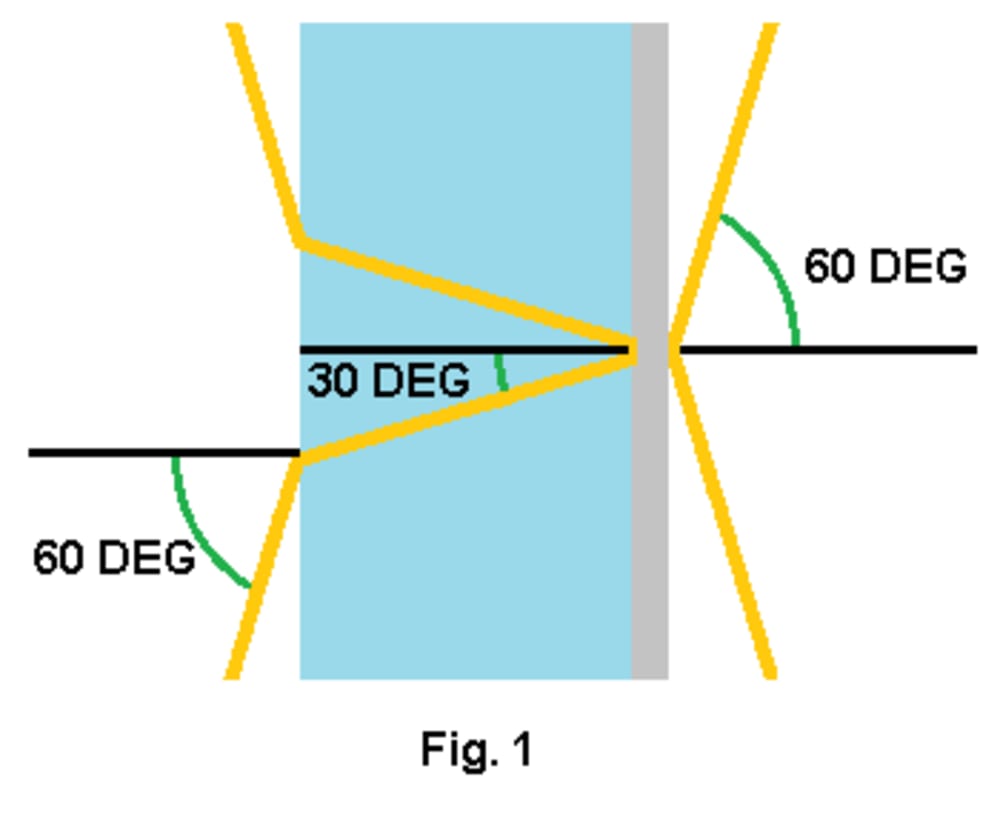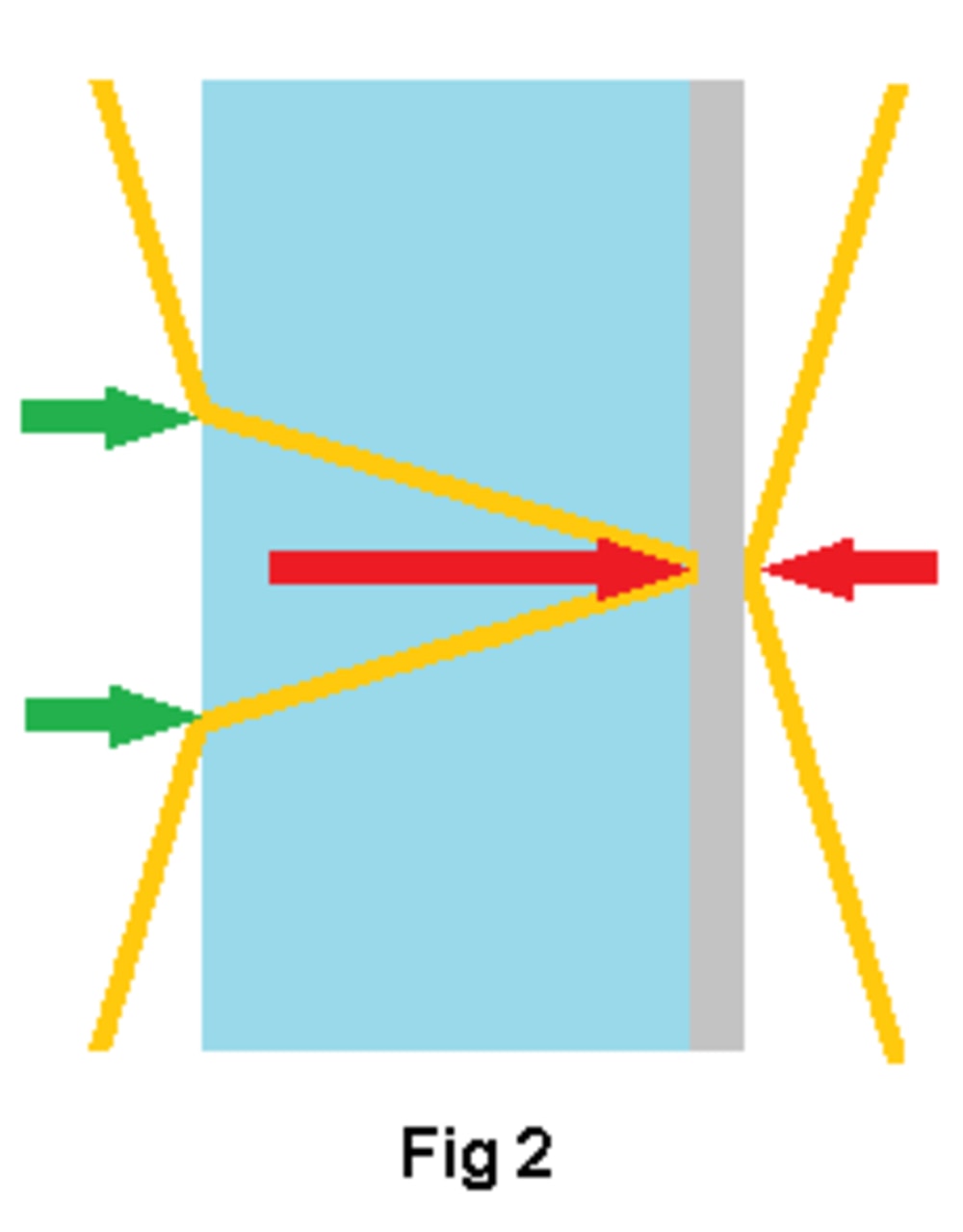Z-PEC Zero–Point Energy Converter
According to Quantum Electrodynamics, otherwise empty space is filled with tremendous energy; it’s called the Quantum Flux or Zero-Point Energy. Z-PEC will mechanically tap this unlimited resource for pollution-less electrical generation and pollution-less vehicular-propulsion.
• A Z-PEC prototype can be built by sputtering layers of metals and refractive-materials onto a silicon chip.
Peer-reviewed experiments support the underlying tenets of this paper.
• Obeys the Laws of Motion, Thermodynamics and Momentum Conservation.
• Fig. 1 illustrates how to get a net force from the isotropic momentum of the Electromagnetic Field of the Quantum Flux.
Refer to Fig. 1; it illustrates the paths of an average pair of equal and opposite photons of the Quantum Flux. Both photons approach the system at 60 degree angles; however, the photon on the left enters a refractive material (blue); look at how this bends its path so it strikes its side of a double mirror at a steeper, more-perpendicular 30 degree angle. The refracted photon strikes its side of the mirror harder than the other photon which glances off the bare side of the mirror at a much shallower 60 degree angle. Therefore, the mirror will move to the right.
Below, F is the force of a photon striking a mirror at a zero-degree (perpendicular) angle. The magnitude of the momentum of each of the two photons that are shown in Fig. 1 is equal to the magnitude of the momentum of F. The forces of photons acting on the mirror are:
F cos 30 degrees = 0.8660 F
F cos 60 degrees = 0.5000 F
0.8660 – 0.5000 = 0.3660 F net reflection-force
Momentum is conserved because the photon has angular momentum while its path is being bent by refraction; this changes the direction of its linear momentum. It is like a car coasting through a turn; it exits the turn with its previous magnitude of momentum but in a new direction. Of course, this exerts forces on the road.
A car exerts forward-directed forces that act on the road as it decelerates while entering a school zone; it also exerts a force on the road that is directed back toward the school zone when it accelerates as it leaves the school-zone. According to peer-reviewed experiments, the photon also exerts an inwardly-directed refracting force as it decelerates when it enters a refractive material; and it also exerts an inwardly-directed force when it accelerates as it exits the refractive material.
Refer to Fig. 2; these refraction forces are shown by the green arrows in Fig. 2. Entry-forces and exit-forces are both exerted toward the refractive material but in the same direction since the photon enters and exits the same side of the refractive material. The refraction forces act in the same direction as the net reflection force which is implied by the two red arrows.
Conclusion: Achieving practical thrust from a Z-PEC chip is possible with a modest research effort, using existing technologies.
W. Scott Smith scott712@hotmail.com
Like this entry?
-
About the Entrant
- Name:William Smith
- Type of entry:individual
- Patent status:none





